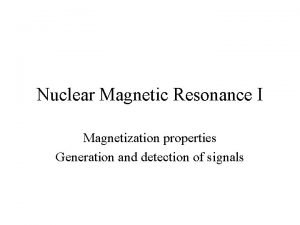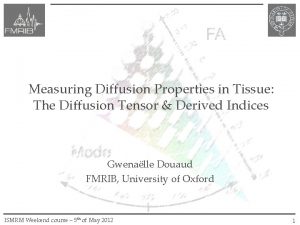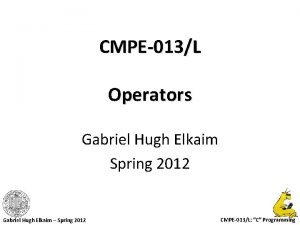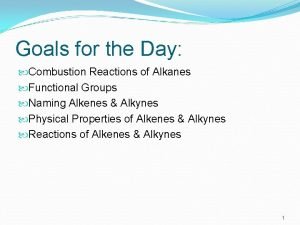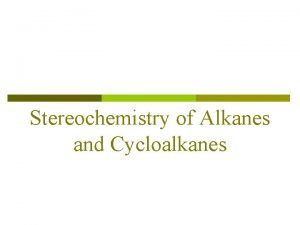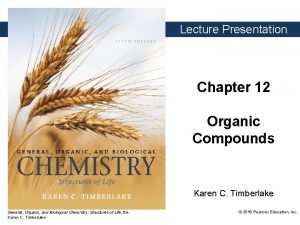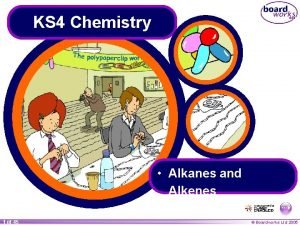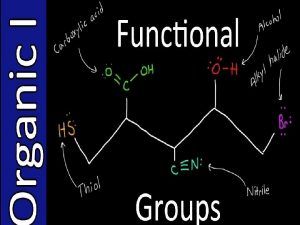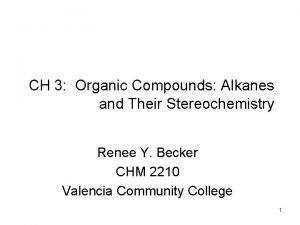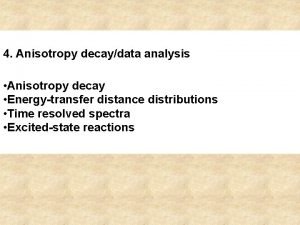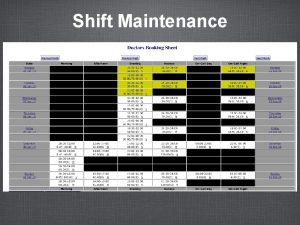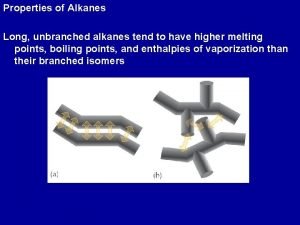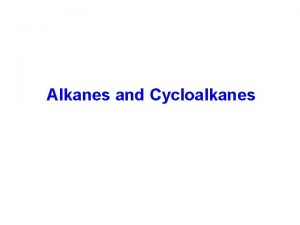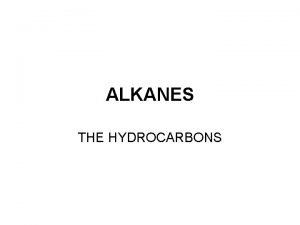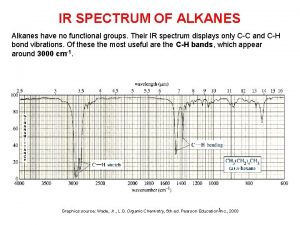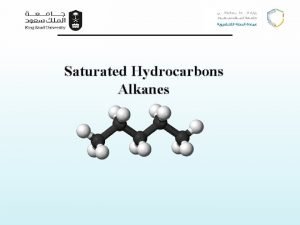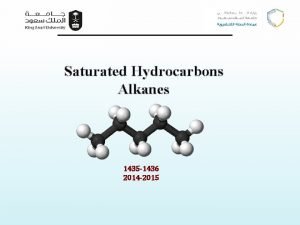Chemical shift Inductive effects in alkanes Anisotropy Inductive



























- Slides: 27

Chemical shift - Inductive effects in alkanes - Anisotropy - Inductive effects in alkenes - δ values for different groups - 13 C chemical shift in different groups - Solvents - Rotation

Inductive effects in alkanes

Inductive effect and chemical shift

δ-values: Hybridization effects δ values: sp 3 < sp 2 < sp Carbons with sp 2 hybridization hold the electrons closer to the nucelus than do sp 3 carbons. This leads to less shielding of the attached protons. Thus vinyl hydrogens have higher chemical shifts than alifatic hydrogens Acetylenic protons (sp-hybridized C) would be expected to have a higher chemical shift than vinyl protons. This is not true due to magnetic anistropy

Magnetic anisotropy A magnetic field with non-uniform density or non-sperical distribution The presence of π-electrons in a magnetic field sets up a small, local current and an anisotropic magnetic field in its close proximity Applies only to atoms with sp 2 and sp hybridization





Inductive effects i alkenes

Alkynes

Chemical shift overview


Alkaner: δ-values



Alkener: δ values


Benzene derivatives: δ values


13 C-Carbonyl chemical shift

13 C-cyclic compounds

13 C-Arenes

Cyclic alkenes

N-H and O-H chemical shift δ: very dependent on solvent and concentration R-O-H: 0, 5 < δ < 4, 5 R-N-H: 1, 0 < δ < 5, 0 Carboxylic acids (usually dimeric): 10 < δ 12 Enols: 12 < 18 In deuterated protic solvents: N-H, O-H and S-H can rapidly exchange D with solvent and the 1 H-NMR signal disappears.

Solvents Non polar solvents: Small effect on chemical shift Polart + benzene : significant effect on chemical shift

Slow rotation
 Molecular decay
Molecular decay Fractional anisotropy meaning
Fractional anisotropy meaning Dry etching vs wet etching
Dry etching vs wet etching Anisotropy
Anisotropy Fractional anisotropy meaning
Fractional anisotropy meaning Gabriel hugh elkaim
Gabriel hugh elkaim Bathochromic shift and hypsochromic shift
Bathochromic shift and hypsochromic shift Difference between arithmetic shift and logical shift
Difference between arithmetic shift and logical shift Bathochromic shift and hypsochromic shift
Bathochromic shift and hypsochromic shift Difference between arithmetic shift and logical shift
Difference between arithmetic shift and logical shift Mandible movement
Mandible movement Aniline uv spectrum
Aniline uv spectrum Difference between arithmetic shift and logical shift
Difference between arithmetic shift and logical shift Cap 221
Cap 221 Crash course chemistry naming compounds
Crash course chemistry naming compounds Combustion reaction of alkanes
Combustion reaction of alkanes Cycloalkanes
Cycloalkanes Viscosity of alkanes
Viscosity of alkanes Bond angle in cyclohexane
Bond angle in cyclohexane Alkanes alkenes alkynes
Alkanes alkenes alkynes Uses of alkanes
Uses of alkanes Combustion of alkanes
Combustion of alkanes Uses of alkanes
Uses of alkanes Alkanes in bromine water
Alkanes in bromine water Cyclopentane uses
Cyclopentane uses Alkanes are also called
Alkanes are also called Covalently def
Covalently def Alkanes list
Alkanes list
